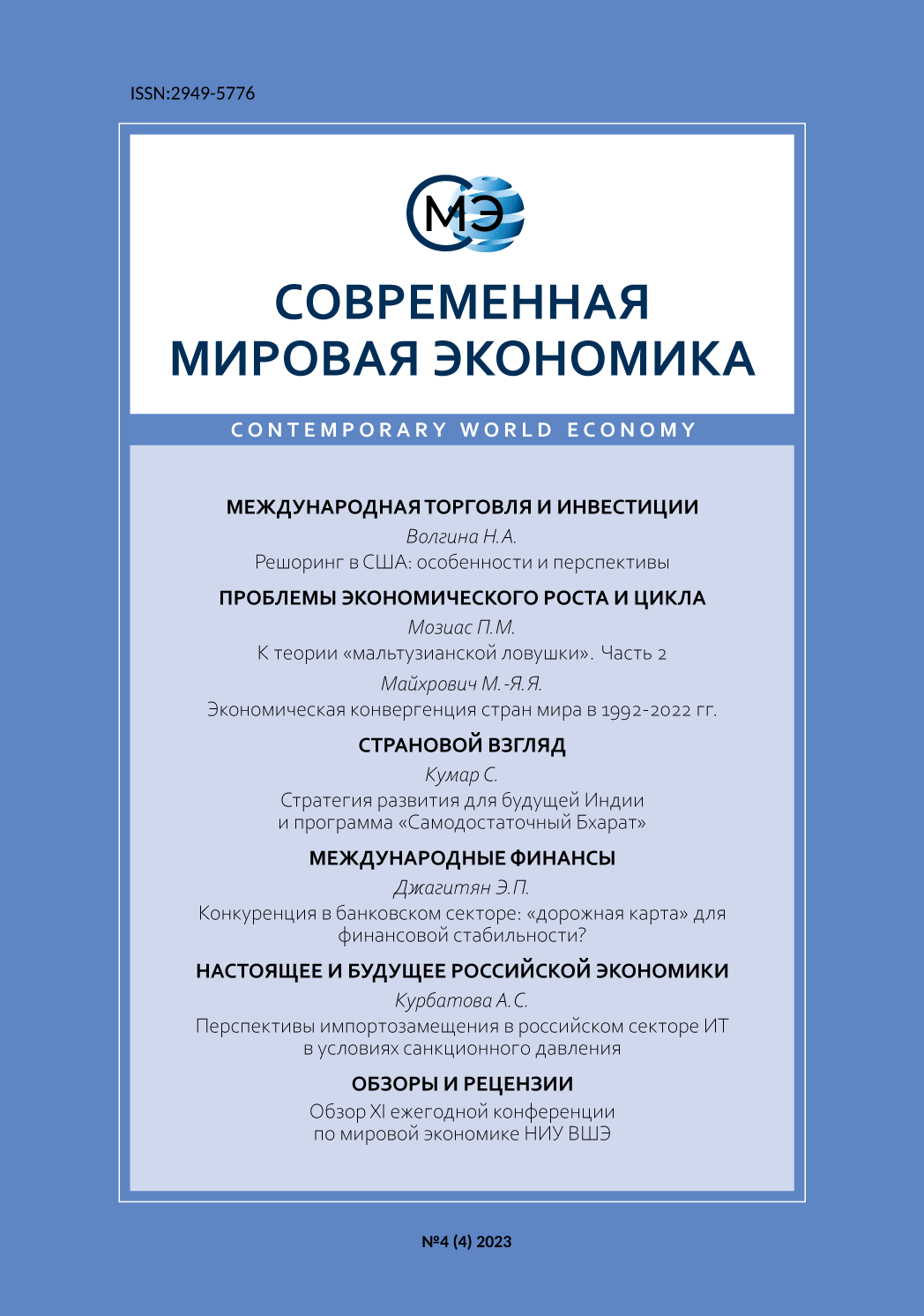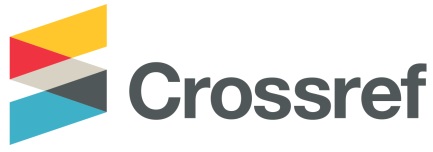Стратегия развития для будущей Индии и программа «Самодостаточный Бхарат»
Аннотация
В статье исследуются стратегии развития, которые позволят добиться цели по превращению Индии в развитую экономику к 2047 г. Как можно наблюдать, протекционистская стратегия развития, которой страна придерживалась первые 40 лет своей независимости, не помогла выбраться из бедности, а лишь защищала интересы влиятельных кругов. В последние 30 лет экономика демонстрировала достаточно хорошие показатели роста вследствие принятия стратегии экономической либерализации. Однако растущее неравенство, зависимость от внешних факторов и стагнация производства заставили задуматься о недостатках либерализации. Пандемия COVID-19 выявила пределы глобальных цепочек поставок. Чтобы минимизировать негативные последствия либерализации, правительство Индии реализует концепцию «Самодостаточный Бхарат» (Atmanirbhar Bharat). Как ожидается, эта стратегия сделает экономику конкурентоспособной и будет способствовать достижению главной цели — стать инклюзивным развитым государством.
Скачивания
Литература
Amirapu, A., and Subramanian, A., 2015. Manufacturing or Services? An Indian Illustration of a Development Dilemma. Available at: https://www.cgdev.org/sites/default/files/CGD-Working-Paper-409-Amirapu-Subramanian-Manufacturing-Services-India.pdf (accessed 30 March 2024).
Banga, R., and Goldar, B., 2007. Contribution of Services to Output Growth and Productivity in Indian Manufacturing, Economic and Political Weekly [e-journal] 42(26). Available at: Economic and Political Weekly website, https://www.epw.in/journal/2007/26/special-articles/contribution-services-output-growth-and-productivity-indian (accessed 30 March 2024).
Bhagwati, J. N., 1984. Splintering and Disembodiment of Services and Developing Nations. The World Economy, [e-journal] 7(2), pp.133-144. https://doi.org/10.1111/j.1467-9701.1984.tb00265.x
Bhalla, S., Bhasin, K., and Virmani, A., 2022. Pandemic, Poverty, and Inequality: Evidence from India. IMF Working Paper no.2022/069. Available at: https://www.imf.org/en/Publications/WP/Issues/2022/04/05/Pandemic-Poverty-and-Inequality-Evidence-from-India-516155 (accessed 30 March 2024).
Chakrabarty, J., and Nagaraj, R., 2020. Has India deindustrialized prematurely, after three decades of free-market reforms? A Disaggregated Analysis. Economic and Political Weekly, [e-journal] LV(48), pp.40-47. Available at: https://www.researchgate.net/publication/348480621_Has_India_Deindustrialised_Prematurely_A_Disaggregated_Analysis (accessed 30 March 2024).
Chand, R., and Suri, Y., 2024. Multidimensional Poverty in India since 2005-06. Available at: https://www.niti.gov.in/sites/default/files/2024-01/MPI-22_NITI-Aayog20254.pdf (accessed 30 March 2024).
Chengappa, R., 2024. Redefining Bharat. [online]. Available at: https://www.indiatoday.in/magazine/cover-story/story/20240108-newsmaker-of-the-year-pm-narendra-modi-redefining-bharat-2482036-2023-12-30 (Accessed 30 March 2024).
Das, D. K., 2016. Trade Policy and Manufacturing Performance: Exploring the Level of Trade Openness in India’s Organized Manufacturing in the Period 1990-2010. Working Papers id:9073, eSocialSciences. Available at: https://ideas.repec.org/p/ess/wpaper/id9073.html (accessed 31 March 2024).
Datt, G., Ravallion, M., and Murugai, R., 2016. Growth, Urbanization and Poverty Reduction in India. Policy Research Working Paper 7568, World Bank. DOI:10.1596/1813-9450-7568
Denison, E. F., 1967. Why Growth Rates Differ., Washington, DC: Brookings.
Dev, S. M. 2021. Beyond India @75: Growth, Inclusion and Sustainability. Working Paper no. WP-2021-026, Indira Gandhi Institute of Development Research. [Accessed 01 April 2024].
Goldar, B., Krishna, K. L., Aggarwal S.C., Das D.K., Erumban A.A., and Das P.C., 2016. Productivity growth in India since the 1980s: the KLEMS approach. Indian Economic Review, 52(1/2), pp.37-71.
Goldar, B., Banga, R., and Banga, K., 2018. India’s Linkages into Global Value Chains: The Role of Imported Services. In Shah, S., Bosworth, B., and Muralidharan, K., (eds.), India Policy Forum 2017-18, 14(1), pp.107-172.
Goldberg, P. K., and Reed, T., 2023. Presidential Address: Demand‐Side Constraints in Development. The Role of Market Size, Trade, and (In) Equality. Econometrica, 91(6), pp.1915-1950. https://doi.org/10.3982/ECTA20787
Greenwald, B., and Stiglitz, J.E., 2014. Industrial Policies, the Creation of a Learning Society, and Economic Development, in Stiglitz, J.E., and Lin, J., eds., The Industrial Policy Revolution. Basingstoke and New York: Palgrave Macmillan.
Jorgenson, D.W., and Timmer, M.P., 2011. Structural change in advanced nations: A new set of stylized facts, Scandinavian Economic Journal 113(1), pp.1-29.
Kumar, S., 2022. Economic growth prospect for India: A Sectoral Analysis. Manuscript.
Lal, D., 1988, 1989. The Hindu Equilibrium, Vols. I and II. Oxford: Oxford University Press.
Lewis, W.A., 1954. Economic development with unlimited supplies of labour. The Manchester School, 22(2), pp.139-191. https://doi.org/10.1111/j.1467-9957.1954.tb00021.x
Maddison, A., 1987, Growth and slowdown in advanced capitalist economies: techniques of quantitative assessment. Journal of Economic Literature, 25 (2), pp.649-698.
Ministry of Finance, 2024. Highlight of Budget 2024-25, Ministry of Finance, Government of India, New Delhi.
Oda, M., and R. Strapp, 2003. On the price of non-traded goods. Indian Economic Review, 38(1), pp.115-123.
Panagariya, A., with More, V., 2023. Poverty and Inequality Before and after Covid, paper presented at Columbia Summit on Indian Economy, New York.
Ravi, S., 2023. Making India Self-Reliant. EAC-PM Working Paper Series EAC-PM/WP/19/2023, Economic Advisory Council, Prime Minister, Government of India, New Delhi. Available at: https://eacpm.gov.in/wp-content/uploads/2023/07/19-Atmanirbhar-India.pdf
Ravn, M. O., and Uhlig, H., 2002. On Adjusting the Hodrick-Prescott Filter for the Frequency of Observations. The Review of Economics and Statistics, MIT Press, 84(2), pp.371-75.
Ray, A. S., 2016. The enigma of the “Indian model” of development, Rethinking Development Strategies after the Financial Crisis, 2. New York: United Nations.
Rodrik, D., and Stiglitz, J.E., 2024. A New Growth Strategy for Developing Nations. [pdf] Available at: https://drodrik.scholar.harvard.edu/sites/scholar.harvard.edu/files/dani-rodrik/files/a_new_growth_strategy_for_developing_nations.pdf
Ros, J., and Skott, P., 1998. Dynamic effects of trade liberalization and currency overvaluation under conditions of increasing returns, The Manchester School, 66(4), pp.466-89.
Sell, F. L., 1988. “True exposure": The Analytics of Trade Liberalization in a General Equilibrium Framework. Kiel Working Papers 312, Kiel Institute for the World Economy (IfW Kiel), 124(4), pp. 635-652.
Subramanian, S., 2019. What is Happening to Rural Welfare, Poverty, and Inequality in India [online]. Available at: https://www.theindiaforum.in/article/what-happened-rural-welfare-poverty-and-inequality-india-between-2011-12-and-2017-18 (accessed 02 April 2024).



.jpg)

